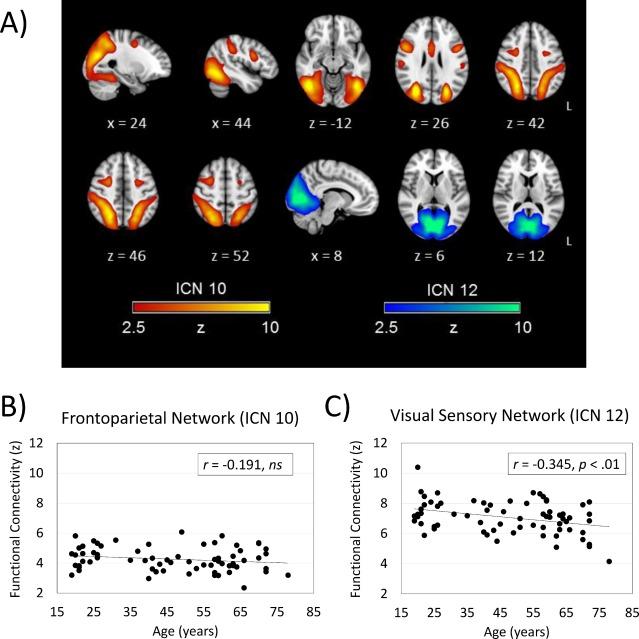
We conducted functional magnetic resonance imaging (fMRI) with a visual search paradigm to test the hypothesis that aging is associated with increased frontoparietal involvement in both target detection and bottom-up attentional guidance (featural salience). Participants were 68 healthy adults, distributed continuously across 19 to 78 years of age. Frontoparietal regions of interest (ROIs) were defined from resting-state scans obtained prior to task-related fMRI. The search target was defined by a conjunction of color and orientation. Each display contained one item that was larger than the others (i.e., a size singleton) but was not informative regarding target identity. Analyses of search reaction time (RT) indicated that bottom-up attentional guidance from the size singleton (when coincident with the target) was relatively constant as a function of age. Frontoparietal fMRI activation related to target detection was constant as a function of age, as was the reduction in activation associated with salient targets. However, for individuals 35 years of age and older, engagement of the left frontal eye field (FEF) in bottom-up guidance was more prominent than for younger individuals. Further, the age-related differences in left FEF activation were a consequence of decreasing resting-state functional connectivity in visual sensory regions. These findings indicate that age-related compensatory effects may be expressed in the relation between activation and behavior, rather than in the magnitude of activation, and that relevant changes in the activation-RT relation may begin at a relatively early point in adulthood. Hum Brain Mapp 38:2128-2149, 2017. © 2017 Wiley Periodicals, Inc.
Citation: Madden, D. J., Parks, E. L., Tallman, C. W., Boylan, M. A., Hoagey, D. A., Cocjin, S. B., Johnson, M. A., Chou, Y. H., Potter, G. G., Chen, N. K., Packard, L. E., Siciliano, R. E., Monge, Z. A., & Diaz, M. T. (2017). Frontoparietal activation during visual conjunction search: Effects of bottom-up guidance and adult age. Human brain mapping, 38(4), 2128–2149. https://doi.org/10.1002/hbm.23509
